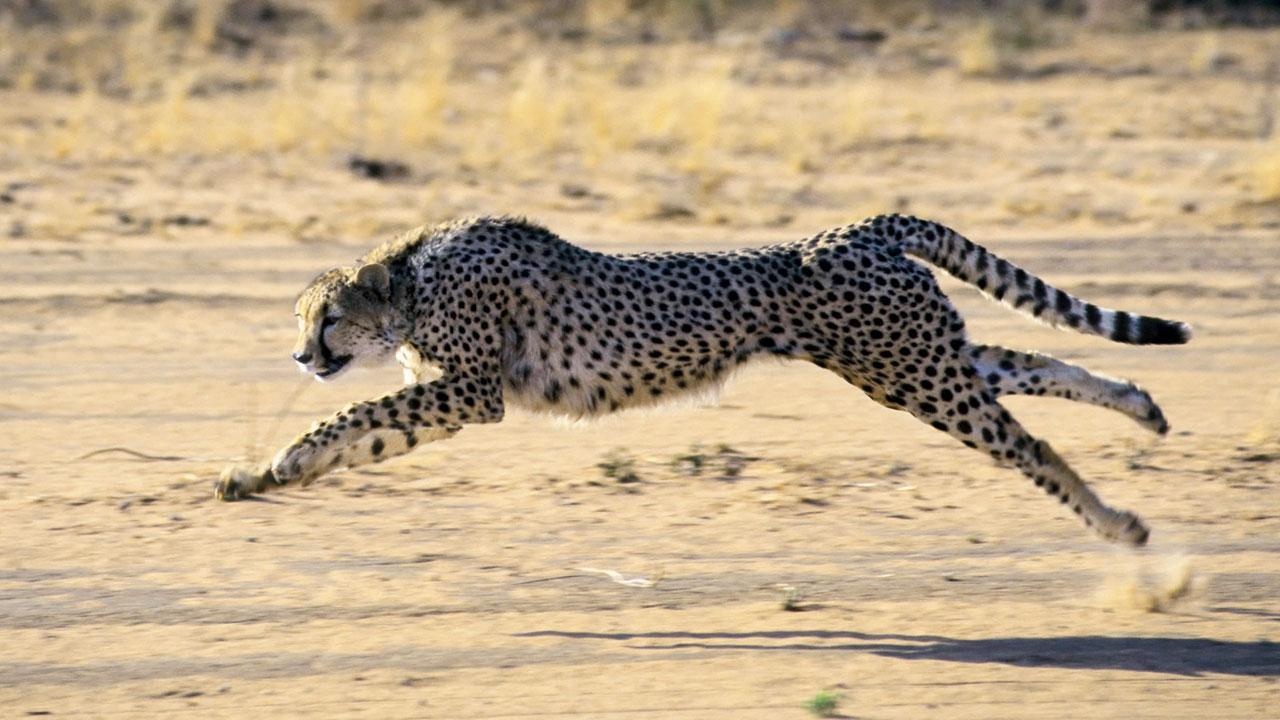The animals have been administered vaccines to safeguard them against diseases and given prophylactic medicine to prevent infection, according to an official in India

The African Cheetah in action. Representational Pic/Getty Images
African cheetahs brought to India as part of the world’s first intercontinental translocation of big cats will soon roam free again in the wild, nearly a year after they were returned to enclosures in Madhya Pradesh’s Kuno National Park for health check-ups and monitoring, according to officials.
ADVERTISEMENT
Officials told the media that the Centre’s Cheetah Project Steering Committee decided on Friday to release the African cheetahs and their cubs, born in India, into the wild in a phased manner after the monsoon withdraws from central parts of the country.
“Members of the committee and NTCA (National Tiger Conservation Authority) officials conducted field visits to Kuno and discussed the schedule for releasing the cheetahs. While adult cheetahs will be released into the wild in phases once the rains end, the cubs and their mothers will be released after December,” an official said.
All 25 cheetahs—13 adults and 12 cubs—are doing well. The animals have been administered vaccines to safeguard them against diseases and given prophylactic medicine to prevent infection, according to the official. The first batch of eight cheetahs from Namibia was introduced in India in September 2022, and the second batch of 12 cheetahs was flown in from South Africa last February.
The cheetahs were initially released into the wild but were brought back to their enclosures by August last year after the death of three—a female named Tbilisi (from Namibia) and two South African males, Tejas and Sooraj, due to septicaemia.
This condition arose from wounds under the cheetahs’ thick winter coats on their backs and necks, which became infested with maggots and led to blood infections, according to the government’s annual report on Project Cheetah. Officials had earlier told the media that the unexpected growth of winter coats by some cheetahs during the Indian summer and monsoon, in anticipation of the African winter (June to September), was a major challenge in managing the animals in India during the first year.
“Even African experts did not expect this. The winter coat, combined with high humidity and heat, caused itching, leading the cheetahs to scratch their necks on tree trunks or the ground. This resulted in bruises and exposed skin, which attracted flies that laid eggs, leading to maggot infestations, bacterial infections and ultimately, the deaths of three cheetahs,” said S P Yadav, director General of the International Big Cat Alliance.
 Subscribe today by clicking the link and stay updated with the latest news!" Click here!
Subscribe today by clicking the link and stay updated with the latest news!" Click here!







